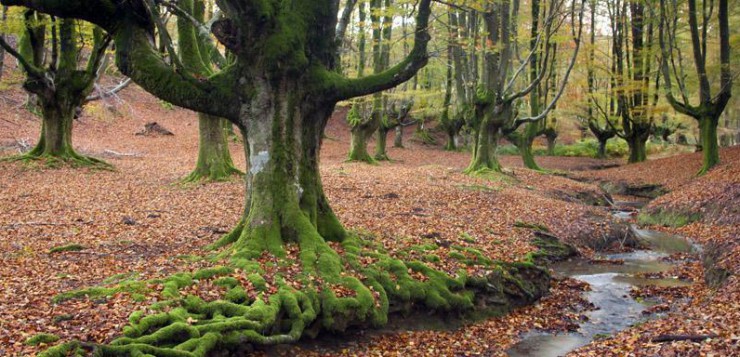Elosegi, Arturo; Elorriaga, Carmen; Flores, Lorea; Martí, Eugènia; Díez, Joserra. Freshwater Science 35(1): DOI: 10.1086/684051 (2016) DIGITAL.CSIC
Dead wood is an important component of natural stream ecosystems, but its abundance has been reduced by human actions. Therefore, in many stream restoration projects dead wood is introduced into stream channels to improve physical habitat, biological communities, and ecosystem functioning. We added dead wood to 4 northern Iberian headwater streams, ranging in mean discharge from 0.026 to 2.5 m3/s, to enhance retention of nutrients, sediments, and organic matter. We placed logs and branches in the stream channels to simulate the amount and orientation found in natural streams and assessed the effects of restoration following a Before-After– Control-Impact design. We measured water and nutrient retention by experimental additions of PO4 3– and NH4 +, with NaCl as a hydrological tracer, and leaf retention by releasing Ginkgo biloba leaves. Introduction of large wood significantly reduced water velocity, especially during high-flow periods, but the overall effects on average nutrient travel distance were not significant. When analyzed individually by stream, effects were significant only for PO4 3– in 1 stream. Wood addition increased average leaf-litter travel distance overall, but when analyzed individually by stream had no effect in the 2 smaller streams despite the fact that previously reported measures of benthic organic matter increased many fold. This discrepancy between ginkgo measurements and benthic storage raises concerns about the relevance of short-term release measurements and suggests that the effects of wood introduction on nutrient retention might also be stronger than reported here. Overall, wood addition decreased water velocity at all sites, but effects on retention of nutrients and organic matter were variable among sites. Nevertheless, the fact that all statistically significant differences found showed enhanced retention, which can be the basis of important ecosystem services, suggests that wood restoration produces functional benefits beyond the improvement of stream habitat.


